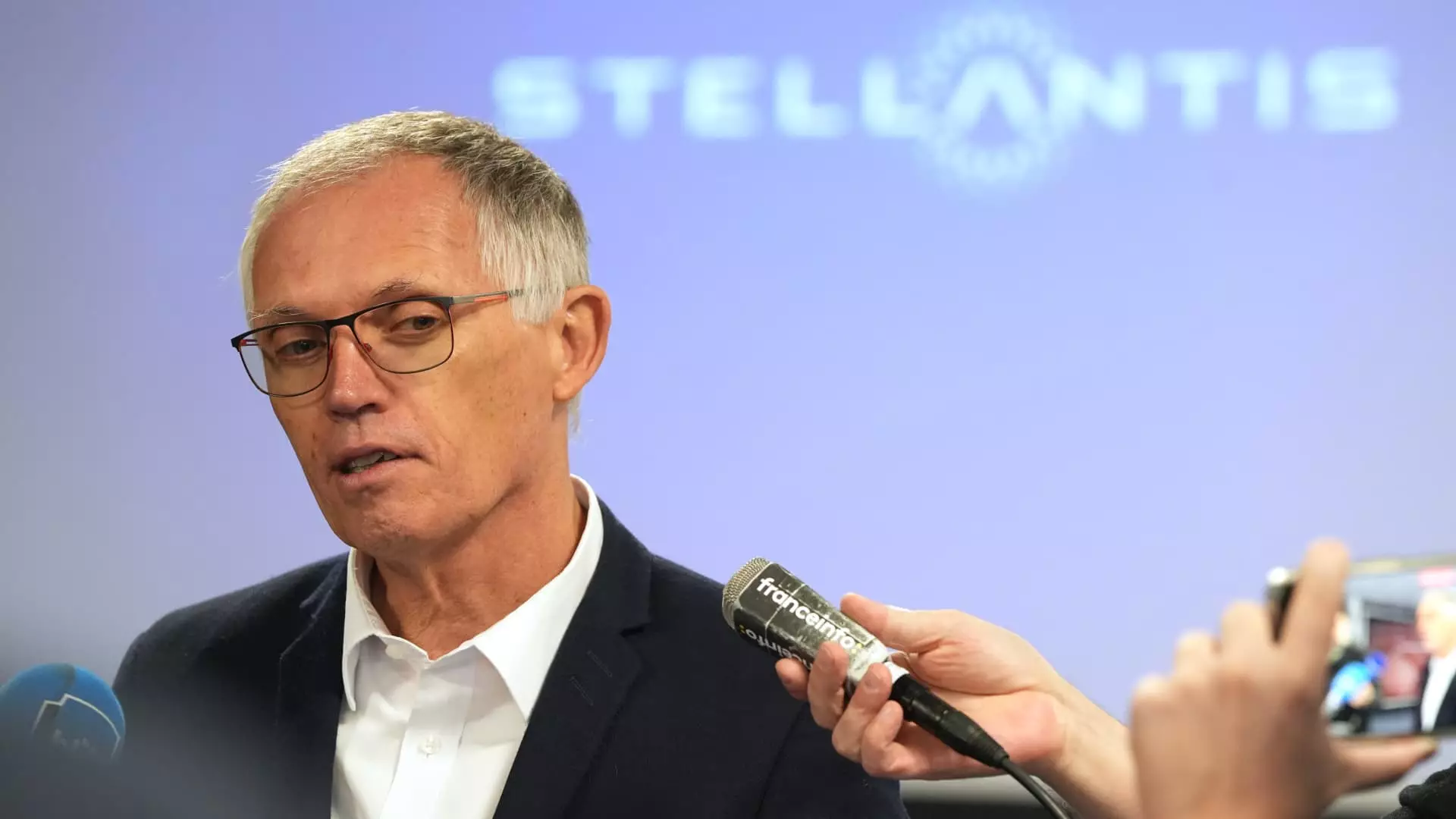In a notable escalation of tension between a major automotive manufacturer and a prominent labor union, Stellantis has initiated legal proceedings against the United Auto Workers (UAW). This lawsuit represents a significant moment in the ongoing struggle between the transatlantic automaker and American labor representatives, highlighting the complexities and challenges inherent in labor relations within the automotive industry. The backdrop to this conflict is a series of production cuts, layoffs, and delays in promised investments, all of which have left many union members feeling marginalized and unprotected.
Stellantis’ lawsuit targets both the international union and a localized chapter in California that recently engaged in a vote to authorize a strike at the company’s Parts Distribution Center in Los Angeles. The message from Stellantis, delivered by senior vice president Tobin Williams, outlines the rationale for the lawsuit as a response to potential breaches of contract that could result from UAW’s actions. Specifically, the automaker argues that an unlawful strike would lead to revenue loss and production disruptions, and seeks to hold the union accountable for these damages.
This preemptive strike by Stellantis not only exemplifies their efforts to maintain operational continuity but also embodies a strategic effort to deter the union from pursuing further actions that could escalate the conflict. By framing their lawsuit as a means to protect their financial interests, Stellantis attempts to reshape the narrative around the labor struggle, painting its actions as a necessary safeguard against union-led unrest.
In response, UAW President Shawn Fain has characterized Stellantis’ legal maneuvers as desperate attempts by leadership to regain control. Fain’s remarks reflect a broader strategy of resistance to what the union perceives as the company’s violation of contractual commitments established in previous negotiations. The UAW’s position underscores a strong belief in their right to strike, perceived not merely as a bargaining tool but as an essential mechanism for enforcing accountability from workers’ rights perspectives.
The UAW claims that Stellantis’ operational decisions, which include production cuts and layoffs, violate the agreements made during the 2023 contract discussions. These allegations are compounded by the union’s assertion that Stellantis has not fulfilled its obligations in terms of promised investments, which further intensifies the friction between the two parties. Fain’s commitment to pursuing action underscores the UAW’s determination not to succumb to what they interpret as intimidation tactics from the company.
A crucial element of the dispute lies in the interpretation of contract language, particularly a provision referred to as “Letter 311.” Stellantis contends that this document stipulates conditional investments that are subject to change based on various market factors, including performance metrics and economic conditions. This claim forms the crux of Stellantis’ argument against the UAW, suggesting that the company possesses the latitude to adjust its operational strategies without breaching contract terms.
Conversely, the union contends that these adjustments disregard the essence of their mutual agreements, fostering an atmosphere of mistrust and uncertainty. As the UAW rallies support from its members and broader community, it seeks to strengthen its position by emphasizing unity and resolve against perceived injustices inflicted by Stellantis.
This situation encapsulates a significant moment in labor relations within the automotive industry, raising fundamental questions about the balance of power between multinational corporations and unions representing labor interests. The escalating tensions not only underscore the fragility of labor-management relations but also spotlight the need for transparent and sincere negotiations centered around worker welfare and corporate accountability.
As Stellantis and the UAW brace for what could become a prolonged legal and political battle, the outcome of this conflict has the potential to shape the future landscape of labor relations in the automotive sector. The dynamics of this case serve as a reminder of the complex interplay between corporate strategy, labor rights, and the necessity for both parties to engage in a meaningful dialogue to avoid detrimental outcomes that could affect workers, management, and the industry at large.
The clash between Stellantis and the UAW exemplifies the intrinsic challenges faced within labor relations today, marked by rising tensions and competing interests. As both sides stand firm in their positions, the future remains uncertain. Whether this dispute leads to significant change, negotiation, or further conflict, it will undoubtedly be a formative chapter in the ongoing evolution of labor rights within the automotive industry, emphasizing the importance of equitable treatment and accountability for all stakeholders involved.

